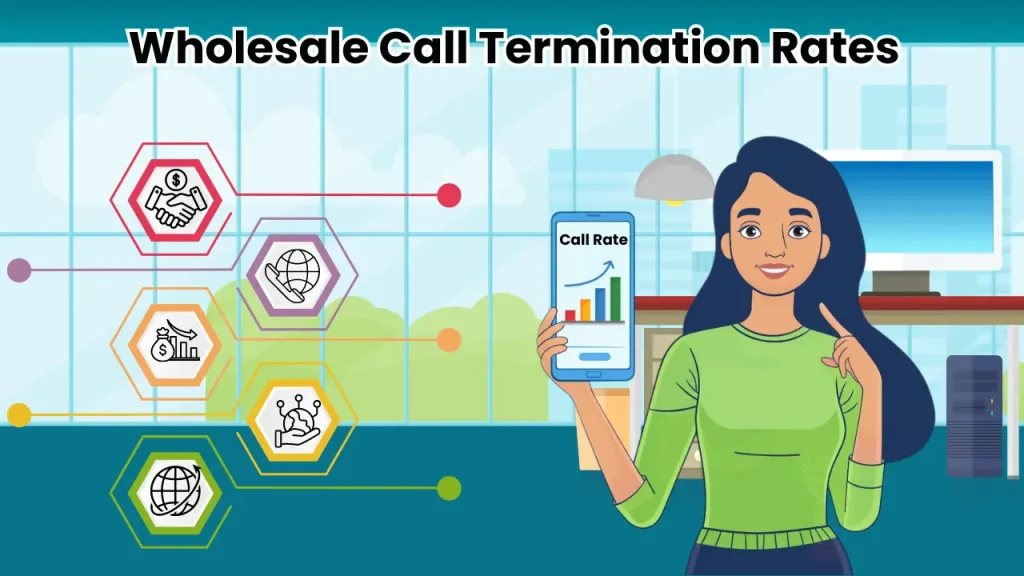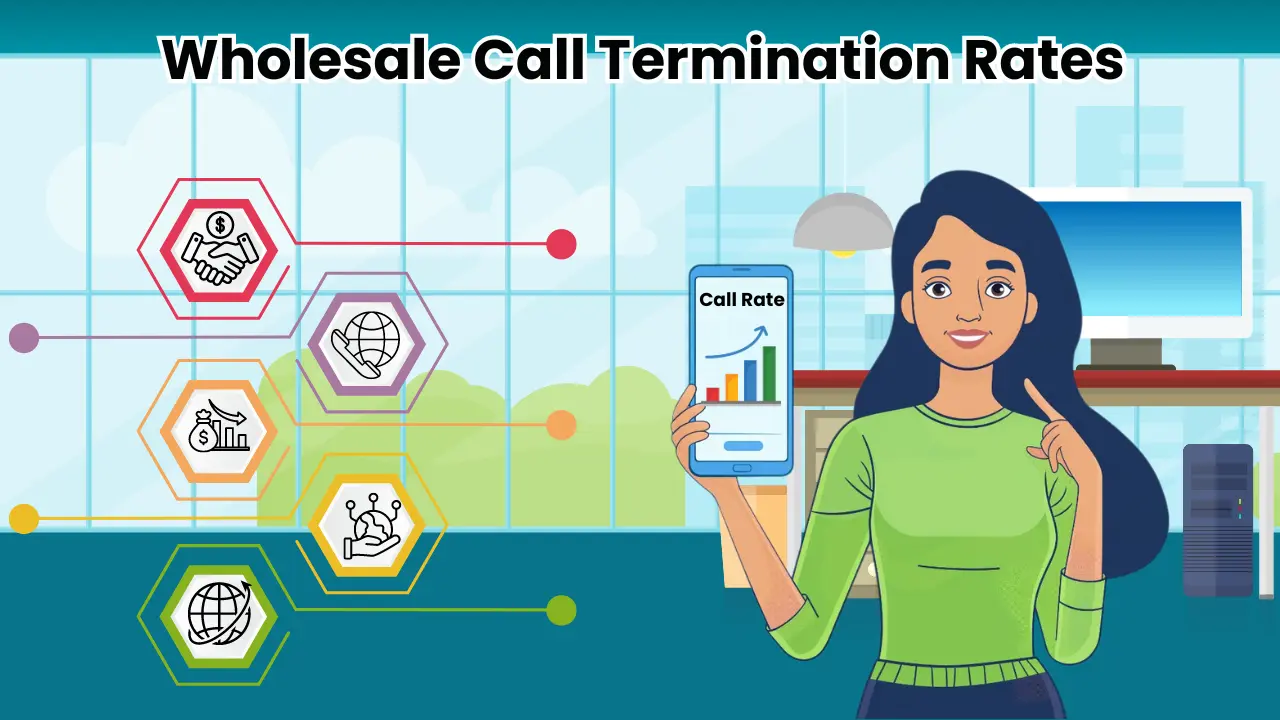
Key Takeaways:
Wholesale call termination rates play a crucial role in the telecommunications industry and can greatly impact service providers and consumers. Factors such as market competition, technology advancements, and regulatory bodies influence wholesale call termination rates.Consumers may experience differences in call quality and pricing due to variations in wholesale call termination rates.Understanding Wholesale Call Termination Rates
Wholesale call termination rates are critical in the telecommunications sector, influencing how service providers manage costs associated with terminating calls across various networks. These rates not only determine the pricing structures for VoIP services but also impact the overall business operations of telecommunications companies. With the digital transformation of the industry, understanding these rates is essential for providers to maintain competitive rates and offer cost-effective solutions that cater to the evolving needs of businesses, ensuring reliable communication and high-quality voice services in an increasingly interconnected global network.Why Are Wholesale Call Termination Rates Important?
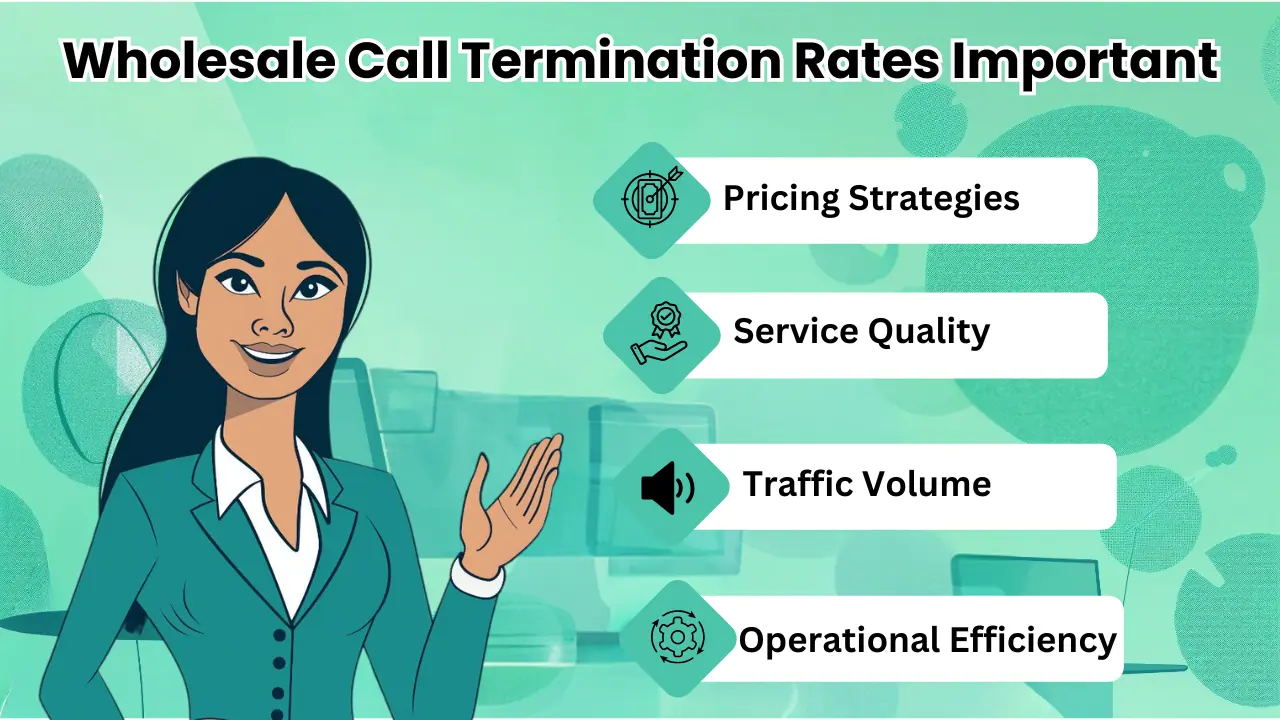 Wholesale call termination rates are essential for telecommunications companies, as they directly affect pricing strategies, service quality, and overall cost savings for VoIP providers and businesses alike. These rates play a crucial role in determining the costs associated with international calls, influencing how service providers set competitive pricing models that cater to the needs of their customers. Understanding the dynamics of these rates is vital for businesses seeking to optimize their communication expenses while ensuring high-quality voice and uninterrupted service through their telephony solutions.
Wholesale call termination rates are essential for telecommunications companies, as they directly affect pricing strategies, service quality, and overall cost savings for VoIP providers and businesses alike. These rates play a crucial role in determining the costs associated with international calls, influencing how service providers set competitive pricing models that cater to the needs of their customers. Understanding the dynamics of these rates is vital for businesses seeking to optimize their communication expenses while ensuring high-quality voice and uninterrupted service through their telephony solutions.
How Do Wholesale Call Termination Rates Impact Service Providers?
Wholesale call termination rates significantly impact service providers by influencing their pricing strategies and operational efficiency within the telecommunications landscape. These rates dictate how VoIP companies approach their cost structures and can lead to either competitive advantages or disadvantages in the marketplace. As providers navigate the complexities of these rates, they must adopt strategies that maximize profitability while ensuring that customers receive reliable communication and high-quality voice services. Understanding the nuances of these rates becomes essential in maintaining a competitive edge.Service providers can optimize their pricing models by considering factors such as: Market demand Quality of service Operational costs With effective management of wholesale call termination rates, VoIP companies can enhance their service offerings while making necessary adjustments to their operational decisions. The emphasis on delivering superior service quality fosters customer loyalty, a critical component in a saturated market.What Factors Influence Wholesale Call Termination Rates?
Several factors influence wholesale call termination rates, including the volume of traffic, the regulatory landscape, and the pricing models adopted by service providers in the telecommunications industry. High traffic volumes can lead to economies of scale, thereby reducing costs, while regulatory bodies often impose guidelines that shape how these rates are established. Understanding these influences is crucial for businesses and VoIP providers looking to optimize their operational efficiency and ensure competitive pricing in their service offerings. The interplay between traffic volume and regulatory frameworks can create a complex environment that requires careful navigation. When traffic levels are elevated, telecom companies might benefit from lower per-unit costs, allowing them to offer more attractive rates to their customers.In contrast, regulatory guidelines can limit the extent to which these savings can be passed on. As such, businesses need to continuously assess both external market conditions and internal capabilities to fine-tune their pricing strategies.For telecommunications entities, adapting to these variables is not only about maintaining profitability but also about remaining competitive in a rapidly evolving landscape.How Are Wholesale Call Termination Rates Calculated?
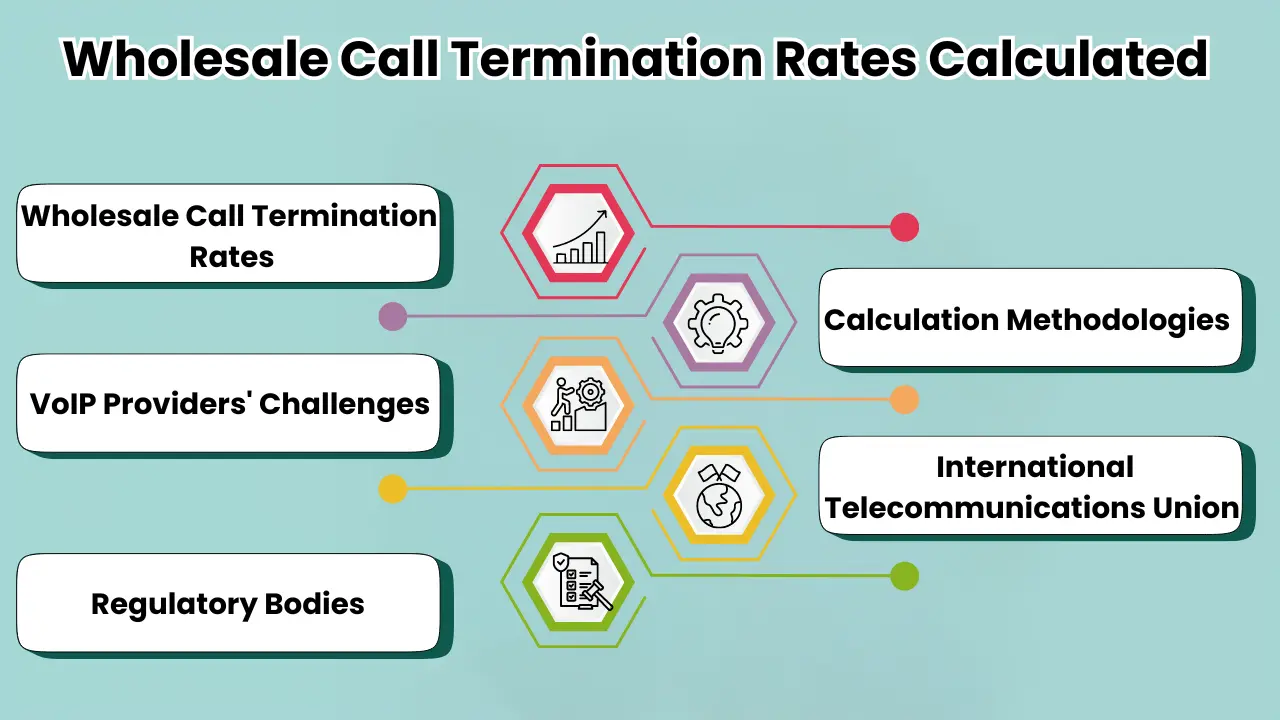 The calculation of wholesale call termination rates involves several methodologies that vary across the telecommunications industry, primarily focusing on the cost of providing services, market demand, and competitive pricing models. VoIP providers often face complex challenges in establishing these rates, aiming to strike a balance between cost-effective solutions and the need to maintain operational efficiency. As the telecommunications landscape evolves, understanding these calculations becomes increasingly vital for businesses seeking to optimize their communication expenses and ensure reliability in service quality.
The calculation of wholesale call termination rates involves several methodologies that vary across the telecommunications industry, primarily focusing on the cost of providing services, market demand, and competitive pricing models. VoIP providers often face complex challenges in establishing these rates, aiming to strike a balance between cost-effective solutions and the need to maintain operational efficiency. As the telecommunications landscape evolves, understanding these calculations becomes increasingly vital for businesses seeking to optimize their communication expenses and ensure reliability in service quality.
What Is the Role of the International Telecommunications Union (ITU) in Setting Rates?
The International Telecommunications Union (ITU) plays a pivotal role in setting the framework for wholesale call termination rates by establishing guidelines and recommendations that aim to promote fair competition and efficient telecommunications practices globally. As a regulatory body, the ITU works to ensure that these rates reflect the realities of the telecommunications landscape while fostering cost-effective solutions for providers and consumers alike. Understanding the ITU’s influence is essential for businesses navigating the complexities of the global network and seeking reliable communication services. In today’s dynamic telecom environment, the ITU serves as a crucial mediator, balancing the interests of various stakeholders, including service providers, regulatory authorities, and consumers. By formulating comprehensive policies, it addresses market imbalances and encourages entities to uphold competitive practices. Key contributions of the ITU include: Standardization: Establishing universally accepted standards that facilitate interoperability among networks. Benchmarking: Providing benchmarks for call termination rates that promote transparency and accountability. Capacity building: Offering training and resources to help countries adopt effective telecom regulations. These initiatives not only impact individual service providers but also reshape the broader marketplace, ensuring that consumers benefit from lower prices and improved service quality.What Is the Role of Regulatory Bodies in Setting Rates?
Regulatory bodies are instrumental in establishing wholesale call termination rates, as they enforce policies and standards that ensure fair pricing and competition among telecommunications providers.These organizations play a critical role in shaping the telecommunications landscape, influencing how pricing strategies are formulated by evaluating competitive practices and market dynamics. They assess the operational efficiency of various service providers, which directly affects their pricing structures. Understanding the intricacies of this regulatory framework is essential, especially for VoIP providers, as it not only helps them maintain compliance but also supports their long-term viability in the market. Failure to adhere to these regulations can result in severe financial repercussions and operational constraints, hindering a provider’s ability to compete effectively. Compliance ensures access to key market segments.Regulations foster a competitive environment, benefiting consumers.Operational efficiency can lead to lower costs and enhanced service delivery.What Are the Different Types of Wholesale Call Termination Rates?
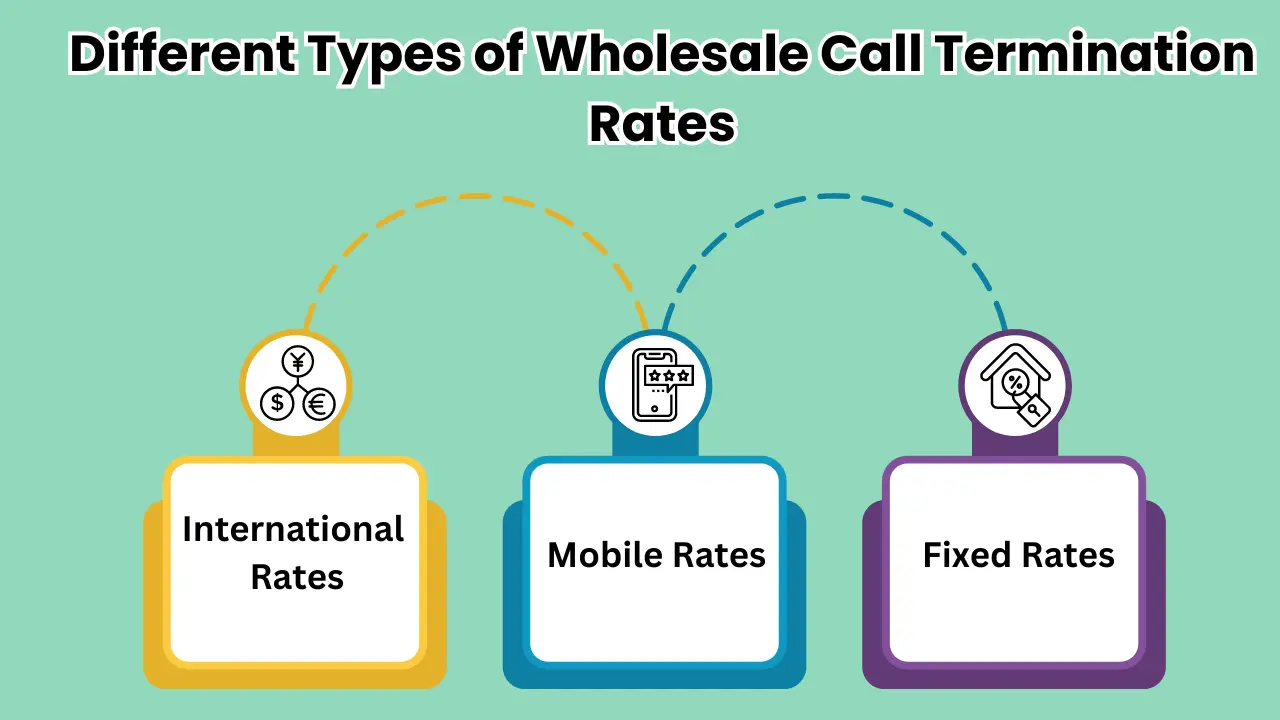 Wholesale call termination rates can be categorized into various types, including fixed rates, mobile rates, and international rates, each serving distinct purposes within the telecommunications ecosystem. Understanding these types is essential for VoIP providers and businesses alike, as they directly influence cost structures and pricing strategies. Each category of rates reflects the unique challenges and opportunities present in different communication scenarios, enabling service providers to optimize their offerings and enhance customer satisfaction.
Wholesale call termination rates can be categorized into various types, including fixed rates, mobile rates, and international rates, each serving distinct purposes within the telecommunications ecosystem. Understanding these types is essential for VoIP providers and businesses alike, as they directly influence cost structures and pricing strategies. Each category of rates reflects the unique challenges and opportunities present in different communication scenarios, enabling service providers to optimize their offerings and enhance customer satisfaction.
Fixed Rates
Fixed rates in wholesale call termination refer to predetermined charges for call termination services, often characterized by stability and predictability in telecommunications pricing structures. These rates provide VoIP providers with a clear framework for establishing costs associated with their services, facilitating easier budget management and operational planning. Understanding fixed rates is crucial for businesses looking to maintain cost-effective communication solutions without unexpected fluctuations. Along with offering stability, fixed rates enhance the ability of telecommunications providers to strategize around their pricing models. By locking in rates, providers can better forecast revenue streams, ensuring that they can operate smoothly without the stress of fluctuating costs. These rates foster competitive advantages as they enable: more accurate pricing for end-users. simplified contract negotiations. greater transparency in service offerings. This predictability also aids VoIP service providers in managing their relationships with customers and suppliers, ultimately creating a more reliable communication ecosystem.Mobile Rates
Mobile rates for wholesale call termination represent charges specifically associated with terminating calls to mobile networks, often varying based on demand and network capabilities. These rates are vital for businesses looking to enhance their communication strategies, as they directly impact cost efficiency and service quality. Understanding the nuances in pricing can significantly affect decision-making and profitability within the telecommunications sector. Specifically, several factors contribute to these varied rates: Network Operator Agreements: Wholesale pricing is often influenced by contractual agreements between VoIP providers and mobile network operators. Geographical Variations: Rates can differ significantly by region, reflecting local telecommunications infrastructure and market competition. Call Volume: Increased call volumes may allow for discounted rates due to negotiated bulk pricing. These mobile rates differ from fixed rates, primarily due to the complexity of mobile networks and the additional costs associated with routing calls over these systems.Mobile rates are crucial for VoIP services since they help providers maintain competitive pricing and high-quality service delivery, ultimately influencing customer satisfaction and retention.International Rates
International rates in wholesale call termination pertain to charges for terminating calls across international boundaries, reflecting the complexities of global telecommunications networks. These rates are crucial for VoIP providers, as they must navigate varying regulations and market conditions that can significantly affect their pricing strategies. Understanding international rates is vital for businesses engaged in global communication, enabling them to make informed decisions about service providers and cost management. When examining the landscape of international rates, it becomes evident that several factors play a pivotal role. Manufacturers of communication technology, regulatory environments, and even geopolitical tensions can shift pricing models dynamically.- Market Demand: Fluctuations in demand for international calling can lead to cost variations.
- Regulatory Compliance: Adherence to local laws is imperative, with some regions imposing heavy taxes on telecommunications.
- Network Infrastructure: The quality and capacity of infrastructure influence operational efficiency and pricing.
How Do Wholesale Call Termination Rates Affect Consumers?
Wholesale call termination rates have a direct impact on consumers by influencing the cost of services and the overall quality of communication they receive. As these rates determine the pricing strategies of VoIP providers, consumers may experience varying costs based on their service provider’s approach to termination rates. Understanding this relationship is critical for consumers looking to make informed choices about their telecommunications options, ensuring they receive high-quality services at competitive prices.What Impact Do Wholesale Call Termination Rates Have on Call Quality?
Wholesale call termination rates significantly affect call quality, with implications for the overall customer experience in telecommunications. When providers operate with low termination rates, they often face pressure to cut corners, which can directly influence the performance and reliability of their services. This subpar approach to service delivery can result in a host of communication problems, including:- dropped calls,
- delayed connections,
- and poor voice clarity,
- ultimately affecting overall customer satisfaction.
How Do Wholesale Call Termination Rates Affect Pricing for Consumers?
Wholesale call termination rates play a critical role in determining pricing for consumers, as they directly influence the costs associated with telecommunications services such as VoIP. When termination rates are high, service providers may pass these costs onto consumers, leading to increased communication expenses. Understanding how these rates affect pricing is important for consumers seeking cost savings while ensuring they receive reliable communication services. As a result, the volatility of termination rates can significantly impact overall expenses for both businesses and individual users. Higher costs imposed on providers can create a ripple effect, affecting the pricing structures that consumers encounter. This relationship necessitates that consumers remain vigilant and informed when selecting their telecom service providers, as not all companies offer the same pricing models. It’s advisable to:- Research the market to identify competitive rates.
- Assess the service quality offered in relation to its price.
- Consider long-term contracts vs. pay-as-you-go options based on individual communication needs.
What Are the Current Trends in Wholesale Call Termination Rates?
 Current trends in wholesale call termination rates reveal significant shifts in the telecommunications landscape, largely driven by advancements in VoIP technology and changing regulatory environments. As competition intensifies among service providers, there is a growing emphasis on offering competitive rates that appeal to businesses and consumers. Understanding these trends is crucial for stakeholders in the telecommunications industry, as they navigate evolving market dynamics and the implications for pricing strategies.
Current trends in wholesale call termination rates reveal significant shifts in the telecommunications landscape, largely driven by advancements in VoIP technology and changing regulatory environments. As competition intensifies among service providers, there is a growing emphasis on offering competitive rates that appeal to businesses and consumers. Understanding these trends is crucial for stakeholders in the telecommunications industry, as they navigate evolving market dynamics and the implications for pricing strategies.
How Have Wholesale Call Termination Rates Changed Over Time?
Wholesale call termination rates have undergone significant changes over time, reflecting the evolution of telecommunications technologies and market dynamics. These rates have been pivotal in shaping how voice communications are structured and priced today. As the telecommunications industry has advanced, particularly since the introduction of digital transmission and the rise of the Internet, the landscape has transformed dramatically. Historically, termination rates were heavily influenced by traditional switch-based models.- In the early days, pricing was often fixed and dependent on long-distance charges.
- The advent of VoIP technology introduced a competitive element that disrupted established norms.
- Regulatory reforms in various regions have also played a significant role in recalibrating these rates.
What Are the Predictions for Future Changes in Wholesale Call Termination Rates?
Predictions for future changes in wholesale call termination rates suggest a continued evolution in the telecommunications sector, influenced by advancements in VoIP technology and emerging market trends. As competition intensifies, service providers may seek to further optimize their pricing strategies, potentially leading to more favorable rates for consumers and businesses alike. Understanding these predictions is vital for stakeholders looking to stay ahead of the curve in a rapidly changing telecommunications landscape. In the upcoming years, the wholesale call termination rates are anticipated to be shaped by various technological advancements and shifting market dynamics. Key innovations in cloud computing and artificial intelligence are likely to enhance the efficiency of telecom operations, streamlining processes that could impact pricing structures.As these technologies mature, providers may be able to offer lower costs while maintaining quality of service, thus benefiting end-users significantly.- Increased automation in network management could lead to reduced overhead costs.
- The integration of machine learning algorithms might improve call routing effectiveness, further optimizing pricing.
- Collaboration among providers could enhance competitive dynamics, creating a more favorable environment for consumers.
FAQs
Wholesale call termination rates refer to the fees charged by one telecommunications network to another for terminating calls on their network. These rates are important because they directly impact the cost of providing telecommunication services and can influence pricing strategies and operational decisions for service providers.
Wholesale call termination rates are typically determined through negotiations between telecommunication networks or through regulations set by government agencies. Factors such as call volume, quality of service, and network infrastructure can all affect the final rate.
No, wholesale call termination rates can vary between different networks. Factors such as geographical location, market competition, and network capacity can all play a role in determining the rates for each network.
Wholesale call termination rates can indirectly impact consumers by influencing the pricing of telecommunication services. If a service provider has to pay higher wholesale rates, they may pass on those costs to consumers through higher prices for their services.
Yes, many countries have regulations in place to ensure fair and reasonable wholesale call termination rates for all parties involved. These regulations are typically overseen by government agencies to prevent monopolies and promote competition in the telecommunications industry.
Service providers can manage their costs and operations by regularly monitoring and adjusting their pricing strategies to account for changes in wholesale call termination rates. They can also invest in efficient network infrastructure to help reduce the costs associated with call termination.

